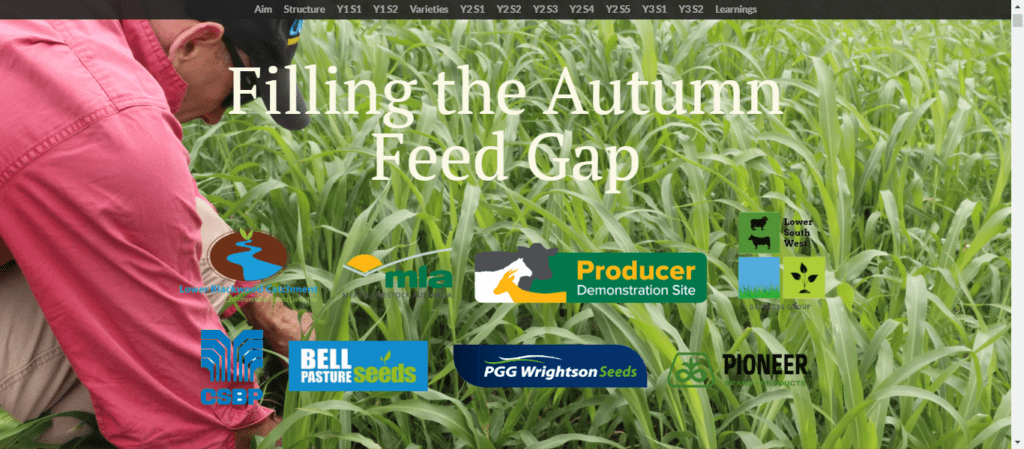This project delivered partnership with the Lower South West Growers Group was targeted at beef producers in the Lower South West region, and aimed to demonstrate the potential of autumn grazed fodder crops to provide a lower cost and more productive alternative to supplement feeding with conserved fodder in the high rainfall Lower South West region in WA.
The project focused on whether a successful autumn forage crop could allow beef producers in the region to meet weaner target weights and maintain stocking rates during that crucial late summer, early autumn period as well as providing a lower cost feed alternative to fodder conservation.
The four-year project saw a strip trial demonstration site established in the first year where 6-10 different autumn fodder varieties will be seeded to see how they perform, with quality and dry matter being measured and season length, timing and persistence of each variety being observed. Years 2 to 4 looked at the potential of well-performing varieties selected and rolled out at five different farm sites across the Lower South West Region.
The project also included a number of field days throughout the four years as well as case studies and a producer project guide to provide an information hub for Lower South West Growers on Autumn Fodder crops.
Key Findings:
- The importance of summer rain needed to sustain the crop through to autumn.
- The potential to use summer crops as a tool to prepare paddocks for winter renovation was also highlighted.
- Soil temperature is a key factor in successful establishment establishment of certain species.
- Diamond Back Moth management for forage brassicas is critical.
- Need to consider the grazing tolerance of each variety.
- Good quality silage can grow animals at similar rates over the dry season and for comparable costs.
Project Resources

Case Study
This project has been enabled though funding from Meat & Livestock Australia’s Producer Demonstration Sites (PDS) program.

This project is sponsored by:


